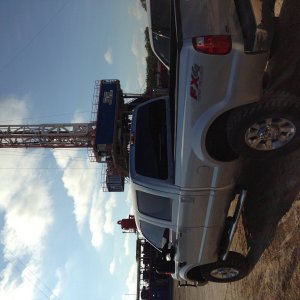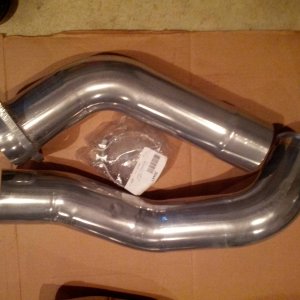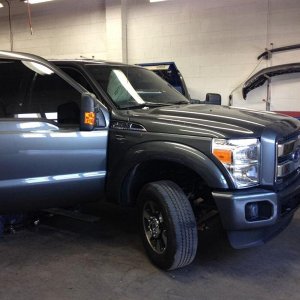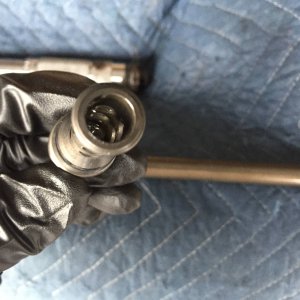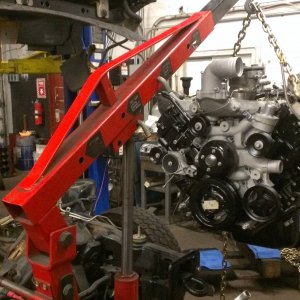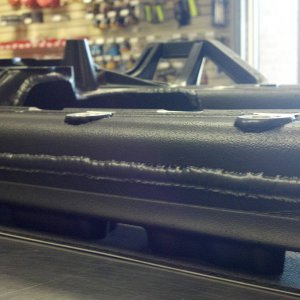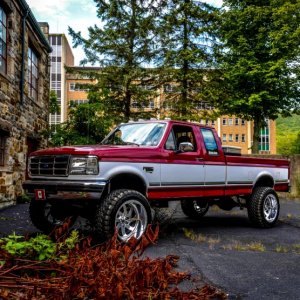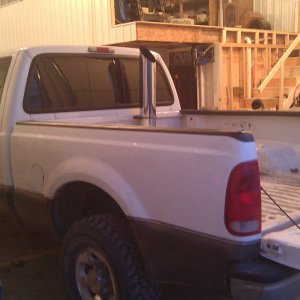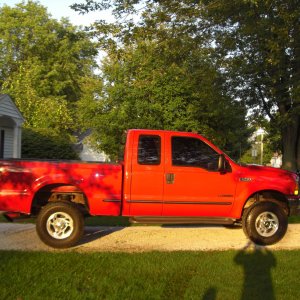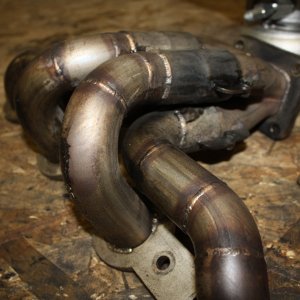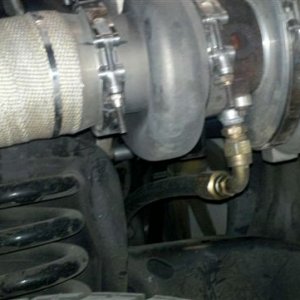That is really weird that it only happens with bigger tires. I wonder what changes.
There is a spec for ball joint binding. You take the tie rod off, put a bolt in the spindle and turn the tire with a torque wrench. I can't remember I think it is like 80ft lbs. If it takes more than that, then change the ball joints. Less and you are good.
Has to be done with truck on the ground so ball joints are in their normal position.
In edit, found it.
TSB released for this condition that supercedes Broadcast Message #0236. Ford Is recommending that the truck be driven and inspected to determine if it has stiff steering and/or poor returnability after turns or a wander. Have the alignment checked and corrected if necessary. If aligning does not correct the condition, check the balljoints by performing a steering knuckle torque to turn test: With the wheels pointed straight ahead on an alignment rack turntables, remove the tie rod from the knuckle. Install a bolt and nut into the tie rod hole and tighten. With a click-type torque wrench set to 100 ft/lbs and installed on the bolt so the handle points straight forward, turn the wheel outward. If the wheel turns without the torque wrench cliking, then the turning torque is acceptable. If the wrench clicks before the wheel turns, replace the balljoints. There is a revised greaseable lower ball joint, P/N 1C3Z-3050-AB, but the upper should be replaced with the current part, F6TZ-3049-AA. When reassembling, torque the lower ball joint nut to 35 ft/lbs; torque the upper ball to 70 ft/lbs; advance the nut to the next slot to line up the cotter pin hole; retorque the lower ball joint nut to 140-160 ft/lbs. The the lower ball joint should be greased at each oil change or at 5000 mile intervals. TSB #01-3-2

